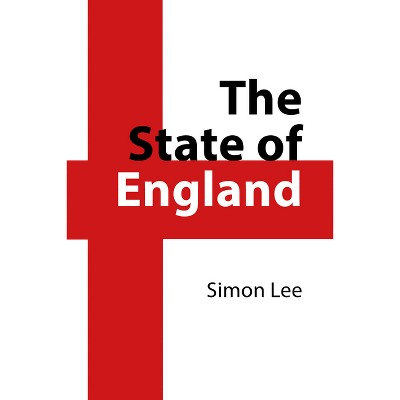Sponsored

The Building of England - by Simon Thurley (Paperback)
Pre-order
Sponsored
About this item
Highlights
- From awe-inspiring Norman castles, to the homes we live in, Simon Thurley explores how the architecture of this small island influenced the world.
- About the Author: Simon Thurley is a leading historian of English architecture, the Provost of Gresham College, Chair of the National Lottery Heritage Fund and a Senior Research Fellow at the Institute of Historical Research.
- 480 Pages
- Non-Classifiable
Description
About the Book
From awe-inspiring Norman castles, to the homes we live in, Simon Thurley explores how the architecture of this small island influenced the world.
Book Synopsis
From awe-inspiring Norman castles, to the homes we live in, Simon Thurley explores how the architecture of this small island influenced the world.
The Building of England puts into context the significance of a country's architectural history and unearths how it is inextricably linked to the cultural past - and present.
Saxon, Tudor, Georgian, Regency, even Victorian and Edwardian are all well-recognised architectural styles, displaying the influence of the events that mark each period. Thurley looks at how the architecture of England has evolved over a thousand years, uncovering the beliefs, ideas and aspirations of the people who commissioned them, built them and lived in them. He tells the fascinating story of the development of architecture and the advancements in both structural performance and aesthetic effect.
In this updated edition of his 2013 classic, Simon Thurley traces the history and contemplates the future of the buildings that have made England.
Review Quotes
'This is a truly stupendous achievement. Thurley [...] is one of the best architectural historians alive in the world - a real scholar. [The book] is an instant classic. Every household should have one' A. N. Wilson, Evening Standard
'This is an impressive book - for its scholarship, for its easy didacticism, for the care with which Thurley has thought things through, and for its inclusiveness. "A bicycle shed is a building; Lincoln Cathedral is a piece of architecture," said the great architectural historian Nikolaus Pevsner: Thurley shows that both have a story to tell' The Sunday Times
Praise for Simon Thurley's previous books:
'[...] the rarest of things - a coffee table book that is also supremely engaging to read' Bill Bryson, The Times
'[A] stupendous new work of scholarship ... it makes the history complete' Clive Aslet, Country Life
'A rich evocation' History Today
'Simon Thurley may be congratulated on a splendid achievement, which serves several different branches of history at once, as well as those who appreciate a clear and lively literary style ... An important addition to knowledge' Ronald Hutton, Times Literary Supplement
'A hugely impressive, readable book that covers its broad canvas with assurance' John Goodall, Country Life
'Lively and authoritative' Andrew Taylor, The Times
'Thurley writes with great detail, invigorating the historical narratives we know and presenting new stories' The Scottish Field
'There can be few as well-placed to write about the buildings associated with the Stuart monarchy as Simon Thurley' Historic House magazine
About the Author
Simon Thurley is a leading historian of English architecture, the Provost of Gresham College, Chair of the National Lottery Heritage Fund and a Senior Research Fellow at the Institute of Historical Research. For 13 years he was chief executive of English Heritage, responsible for heritage protection and for the National Heritage Collection of 420 sites and monuments including Stonehenge. Before that he was director of the Museum of London and Curator of Historic Royal Palaces. He has written 12 books and made many television programmes about historic buildings.
Shipping details
Return details
Trending Book Pre-Orders











